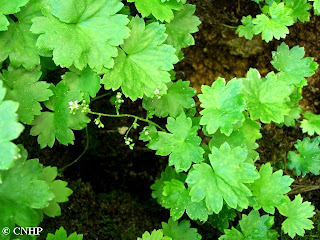Tuesday, August 11, 2009
Hanging Gardens
Hanging-garden communities are known from Colorado, Utah, and Arizona, where they are typically associated with canyon walls and cliff faces. These highly localized environments are found in canyonlands where perennial water sources provide a stable source of moisture within a surrounding arid environment, forming pocketed wetlands and allowing the draping of vegetation across wet cliff faces. The associated wetland species are typically herbaceous, and often include species endemic to the Colorado Plateau. Common species include northern maidenhair (Adiantum pedatum), common maidenhair (Adiantum capillus-veneris), Eastwood's monkeyflower (Mimulus eastwoodiae), seep monkeyflower (Mimulus guttatus), hanging garden sullivantia (Sullivantia hapemanii var. pupusii), Rydberg's thistle (Cirsium rydbergii), and several species of columbine (Aquilegia).
NatureServe and the Colorado Natural Heritage Program recognize two distinct groups of hanging-garden communities, characterized by geology and species composition. Those of the Utah High Plateau ecoregion are associated with springs, seeps, and waterfalls formed in calcareous formations, especially shales of the Green River Formation, while those of the Colorado Plateau ecoregion further south are associated with cliffs where water percolating through the stone reaches the surface along joints between impervious strata in massive sandstone deposits such as the Navajo and Entrada.





No comments:
Post a Comment
Thanks for your comment!
Please note that all comments are moderated, so there may be a delay of some hours (especially over the weekend or at night Colorado time) before your comment shows up.